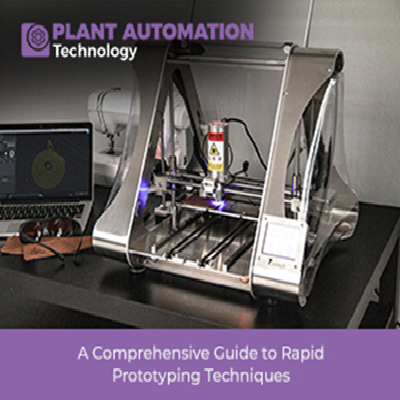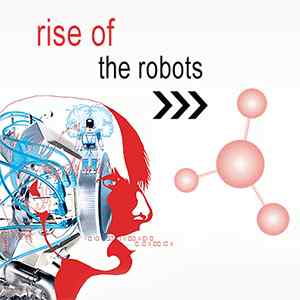A Comprehensive Guide to Rapid Prototyping Techniques

Introduction
Rapid prototyping has revolutionized product development, providing efficient and cost-effective solutions for transforming ideas into reality. These techniques leverage cutting-edge technologies such as 3D printing, CNC machining, and injection molding to create physical prototypes from digital designs. Rapid prototyping empowers designers to iterate on designs, validate concepts, and identify potential flaws or enhancements early in the development cycle. By reducing time to market and minimizing costs associated with traditional manufacturing methods, rapid prototyping enables businesses to drive innovation, foster collaboration, and maintain a competitive edge in today's dynamic market environment. Within this comprehensive guide, we will delve into the various rapid prototyping techniques, their advantages, and how they seamlessly integrate into the manufacturing workflow.
Benefits of Rapid Prototyping Techniques in product development
Rapid prototyping techniques offer numerous advantages that streamline product development. Firstly, they significantly reduce the time required to create prototypes compared to traditional manufacturing methods. With rapid prototyping, designers can transform digital designs into physical models within hours or days, accelerating development timelines. This allows for faster iteration and testing, facilitating better design refinement and reducing time to market.
Furthermore, rapid prototyping methods provide economical solutions. Conventional manufacturing methods entail costly tooling and intricate arrangements, whereas rapid prototyping employs additive manufacturing technologies that demand minimal expenses for tooling or setup. As a result, it becomes an excellent option for startups and small businesses seeking to validate their ideas without substantial initial investments.
Comparison of Different Rapid Prototyping Methods
Several rapid prototyping methods are commonly used in the industry, each offering unique capabilities and suitability for specific applications. Let's explore a few popular techniques.
A) 3D Printing: Referred to as additive manufacturing, 3D printing is a popular rapid prototyping technique extensively utilized. It constructs objects by adding layers, utilizing diverse materials such as plastics, metals, and composites. This approach offers significant versatility, allowing intricate shapes and functional prototypes.
B) CNC Machining: Computer Numerical Control (CNC) machining utilizes subtractive manufacturing processes to create prototypes. It involves cutting or shaping the desired material using precision tools controlled by computer programs. CNC machining offers high accuracy and a wide range of material options, making it suitable for functional prototypes and low-volume production.
C) Injection Molding: Although commonly linked with large-scale manufacturing, injection molding can also serve as a rapid prototyping method. It entails injecting melted material into a mold to produce a prototype. By utilizing injection molding, designers can assess the functionality and visual appeal of their products using materials that closely mimic the final production version.
D) Stereolithography (SLA): SLA is an additive manufacturing technique that uses liquid resin cured by ultraviolet light to create prototypes layer by layer. It provides high accuracy and an excellent surface finish, making it ideal for visual models, concept validation, and intricate designs.
E) Selective Laser Sintering (SLS): SLS employs a powerful laser to selectively bind powdered materials, including plastics or metals, to fabricate prototypes. It presents a broad spectrum of material choices and is especially well-suited to generating functional prototypes, intricate geometries, and components with exceptional heat resistance.
Choosing the Right Rapid Prototyping Technology for Your Project
Selecting the appropriate rapid prototyping technology depends on various factors such as project requirements, desired materials, and budget constraints. Consider the following aspects when choosing a rapid prototyping method:
A) Complexity and Design Requirements: If your design involves intricate features, overhangs, or complex geometries, 3D printing methods like SLA or SLS may be the best. However, if your design requires high precision and tight tolerances, CNC machining might be a better choice.
B) Material Selection: Different rapid prototyping techniques support various materials. Identify the material properties needed for your prototype, such as strength, flexibility, or heat resistance. Select a method that accommodates those materials. For example, if you need metal prototypes, methods like direct metal laser sintering (DMLS) or CNC machining would be appropriate.
C) Time and Cost Constraints: Consider the project timeline and budget when choosing a rapid prototyping technique. 3D printing methods typically offer quicker turnaround times than traditional manufacturing methods. CNC machining, although accurate, may involve higher costs and longer lead times due to the setup and machining processes.
Enhancing Design Iteration with Rapid Prototyping
One of the key advantages of rapid prototyping techniques is the ability to iterate designs quickly. Traditional manufacturing methods often require extensive retooling and modifications, leading to delays and increased costs. In contrast, rapid prototyping enables designers to make design modifications on the fly and produce updated prototypes rapidly.
By utilizing rapid prototyping, designers can receive immediate feedback on their designs, identify flaws or areas for improvement, and make necessary adjustments. This iterative process optimizes product design, functionality, and aesthetics before production. It allows for more efficient collaboration between designers, engineers, and stakeholders, leading to enhanced product outcomes.
Furthermore, rapid prototyping facilitates design concept validation. By creating physical prototypes that closely resemble the final product, designers can conduct testing and gather valuable insights regarding functionality, ergonomics, and user experience. This iterative feedback loop ensures that any design flaws or issues are addressed early on, reducing the risk of costly mistakes during mass production.
Integrating Rapid Prototyping into Manufacturing Workflow
Rapid prototyping techniques can seamlessly integrate into the overall manufacturing workflow, bringing significant benefits throughout the product development process. From concept ideation to final production, rapid prototyping plays a vital role at every stage.
During product development, rapid prototyping allows designers to quickly create visual models and concept prototypes. These prototypes can be used for market research, user feedback, and investor presentations, helping to secure funding and validate the product's market potential.
As the design progresses, rapid prototyping enables the creation of functional prototypes that closely resemble the final product. These prototypes can be used for various tests, such as form, fit, and function validation, as well as performance and durability assessments. The insights gained from these tests can guide further design improvements and ensure that the final product meets or exceeds customer expectations.
Moreover, rapid prototyping can also aid in the creation of custom tooling or molds for manufacturing processes like injection molding or die casting. By leveraging rapid prototyping, tooling development time and costs can be significantly reduced. This enables faster production setup and a quicker time to market.
By integrating rapid prototyping into the manufacturing workflow, companies can foster innovation, reduce development cycles, and gain a competitive edge in the market. Rapid prototyping is a valuable tool in modern manufacturing practices.
Conclusion
Rapid prototyping techniques have transformed the product development landscape, offering numerous benefits such as accelerated design iteration, optimized product outcomes, and streamlined manufacturing workflows. By selecting the appropriate rapid prototyping technology for a specific project, businesses can unlock the advantages of faster iteration, cost-effective prototyping, and enhanced collaboration. Integrating rapid prototyping into the overall manufacturing workflow enables companies to drive innovation, reduce time to market, and meet customer demands effectively. Embracing rapid prototyping as a core aspect of product development empowers businesses to stay agile, competitive, and responsive to the dynamic market environment.











